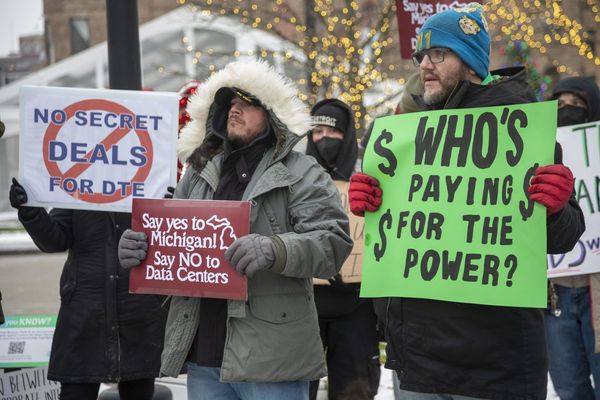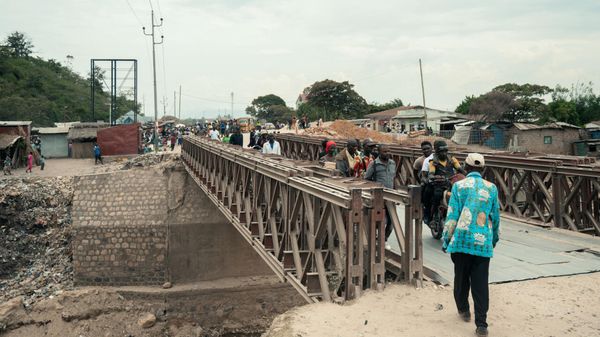
A fight over climate policy has broken out within a major Australian business lobby, with mining billionaire Andrew Forrest’s Fortescue sharply criticising the Business Council of Australia over its modelling of the costs of making emissions cuts.
A report released by the business council on Friday claimed Australia would need up to $530bn in capital investment and to potentially curb coal and gas exports to achieve a 2035 emissions target of 70% or more.
The modelling does not factor in the cost of not acting on the climate crisis nor measure the economic benefits of new clean investment.
In a statement on Friday morning, Fortescue Metals and Operations – a business council member – rejected the modelling, saying it “underplays the opportunities for our economy”.
“Further, some of the assumptions in the model around cost were not shared with BCA members, which undermines the credibility of the findings,” Fortescue’s chief executive, Dino Otranto, said. “The fact is [that] many businesses want strong targets, but a handful of fossil fuel companies are holding us back.”
The Climate Change Authority – the commonwealth’s advisory body on emissions targets – is considering its final recommendation on a 2035 emissions target before the government announces its goal later this month.
The BCA chose not to advocate for a specific target, instead commissioning consultancy firm McKinsey to model the scale of capital investment required to achieve three emissions reduction pathways out to 2035: a cut of roughly 50%, roughly 60% and 70% plus.
The Climate Change Authority’s preliminary advice last year suggested a range between 65% and 75% would be ambitious but achievable if more action was taken, setting the expectations for what would ultimately be recommended to the government.
A coalition of more than 500 companies backed by Fortescue has been lobbying the government to aim for a 75% cut, arguing it would boost economic growth and help build green industries.
Political and industry insiders expect the Matt Kean-chaired authority topropose a target range in its final advice. Cabinet is expected to sign off on a 2035 target before Anthony Albanese attends the UN general assembly leaders’ summit in New York later this month.
The business council’s report said that if the government implemented its existing policies and hit its 43% goal by the end of the decade then it could reach roughly 50% by 2035. It said this would require between $210bn and $300bn in total investment across the public and private sector.
It found substantially greater sums of spending, significant policy changes and a much larger green industry workforce would be needed in the two higher scenarios, which more closely align with what the Climate Change Authority is tipped to recommend.
According to the modelling, achieving about 60% would require between $395bn and $480bn worth of capital investment while up to $530bn would be needed to exceed 70%. The most ambitious scenario assumes the electricity sector would run on 90% renewables by 2035 on the back of record rates of construction of new wind, transmission and gas capacity.
The scenario includes a possible reduction in thermal coal and LNG exports, causing a loss in the value of Australia’s exports of between $100bn and $150bn each year.
Speaking on the ABC’s Radio National on Friday, the business council’s chief executive, Bran Black, said the purpose of the report was to signal to the government what investments were needed to make different targets achievable, not to highlight economic loss. Black said it was not economically feasible to do nothing.
“What we say is that there is a pathway for Australia to be really ambitious in terms of the target that it sets, but it is expensive and it’s difficult, and we need to make sure that we’re very clear-eyed,” he said.
The Australian Conservation Foundation accused the business council of “scaremongering” and “trying to hold back climate action”. It said the organisation’s modelling used outdated baselines and data, ignored the benefits of decarbonisationand did not factor in the costs of not acting, including lost productivity from disasters.
The foundation’s climate change program manager, Gavan McFadzean, said Australia’s 2035 target needed to be “no less than 80%”.
The Climate Council said the Friday report suggested the business council understood that stronger emissions targets could “unlock investment, create jobs and drive future competitiveness and prosperity”.
The Climate Council’a chief executive, Amanda McKenzie, pointed out that several business council members, including Telstra, Woolworths, Coles, Rio Tinto, AGL and the Commonwealth Bank, had promised staff, customers and shareholders they would pursue stronger action.
“We encourage these businesses to go further, put their money where their mouth is and publicly support a stronger 2035 climate target,” McKenzie said.
The business council has long been an influential voice in the climate debate and its position on the 2035 target has been highly anticipated among industry and environmentalists.
The group’s position on climate targets has shifted over the past decade. It said a 2030 emissions target of 45% that Labor took to the 2019 election would be “economy wrecking”, but later threw its support behind the country making a cut of up to 50% by 2030 before the Glasgow climate summit in 2021.







